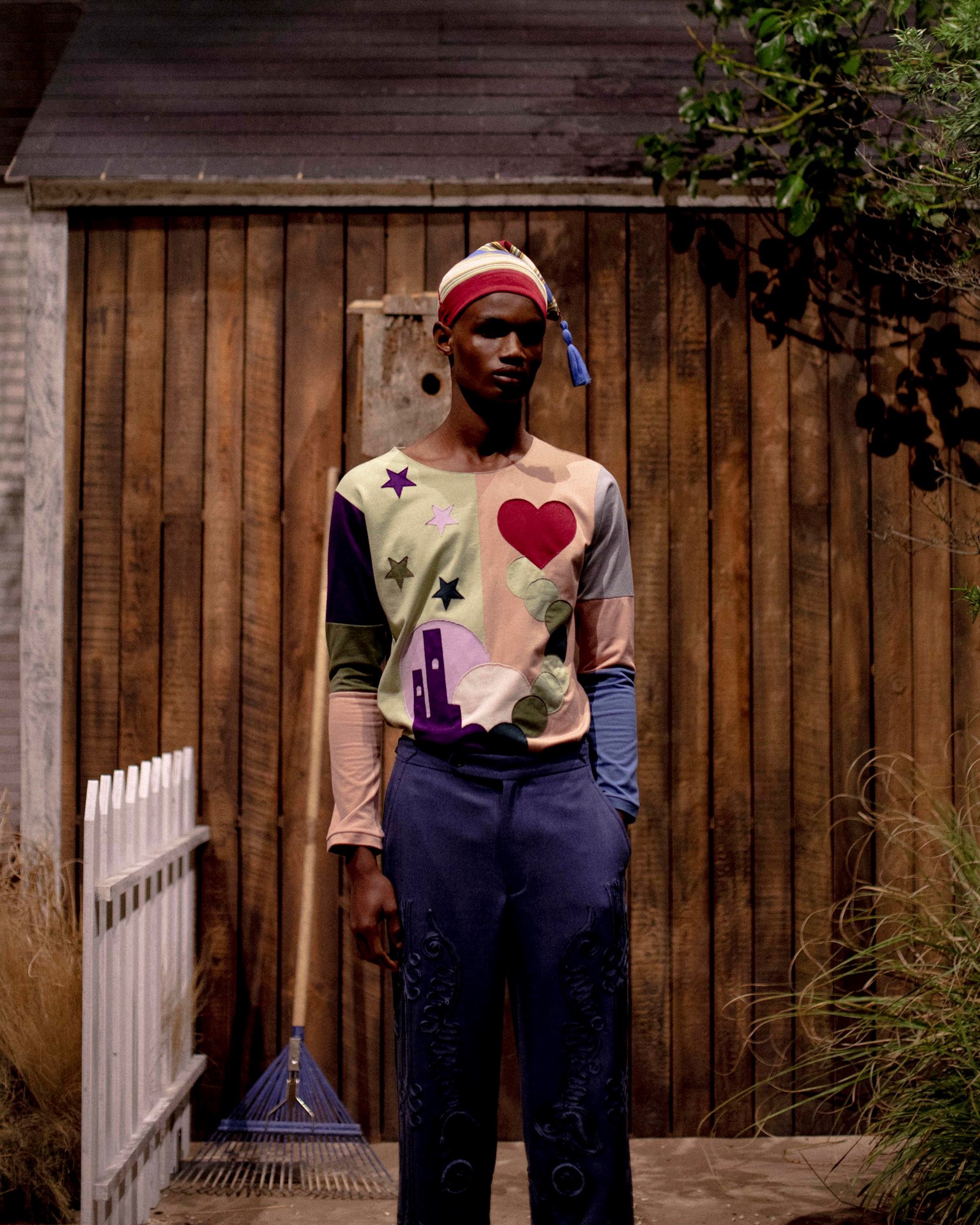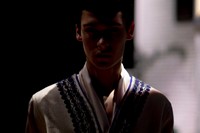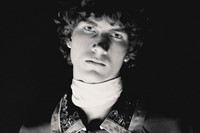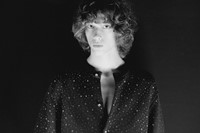Tucked away in the chaotic neighbourhood of Chinatown, Emily Adams Bode Aujla’s New York apartment looks like it belongs by the beach in Cape Cod, not in the claustrophobic heart of Manhattan. With rich wood panelling, lacy white curtains, dried flowers, and a corduroy sofa that guests are encouraged to draw on, the apartment – which Emily shares with her husband, business partner and unofficial muse Aaron Singh Aujla – is like a microcosm of the Bode universe; warm, welcoming and craft-led. Designed by Aaron and Benjamin Bloomstein’s studio Green River Project, the apartment mirrors Bode’s two stores in New York and Los Angeles; magical, zen-like spaces that, once you enter into them, feel transportive to a time well before the internet was invented.
Since launching her namesake brand in 2016, Emily Bode has carved out a singular space not only in the New York fashion scene, but within the realm of menswear as a whole. Mixing historical, slow techniques with her own personal narratives, Bode’s exquisite handmade pieces – quilted jackets, elegant house shoe-inspired slippers, delicately embroidered shirts – hark back to a time when fashion was something to be cherished and repaired, instead of just thrown out.
On Saturday evening at the grand Théâtre du Châtelet in Paris, Bode unveiled their first ever dedicated womenswear collection – mixed in with men’s pieces, which many women have worn for years anyway. Backdropped by a white clapboard house, a picket fence and an American flag – the set recreated the type of Cape Cod beachside house Emily spent her summers in as a child – the collection drew on her own mother’s personal history, when, in the 1970s, she worked on the estate of a 90-year-old woman who would dress up in grand, old-fashioned dresses for dinner each night.
To coincide with the release of Bode’s Autumn/Winter 2023 collection, five wearers of the brand – stylists, writers and furniture designers – speak on Bode’s beautifully considered approach to fashion.
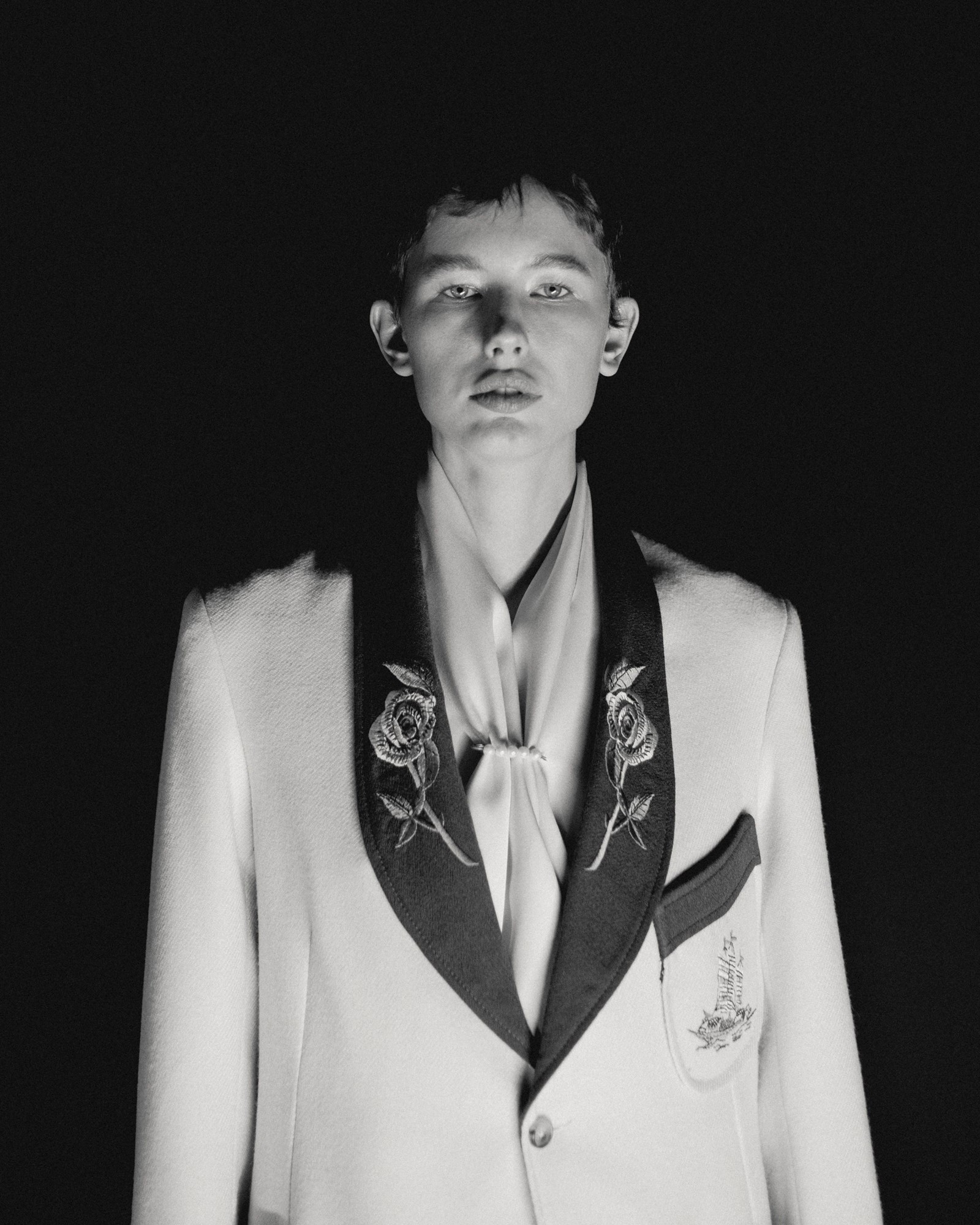
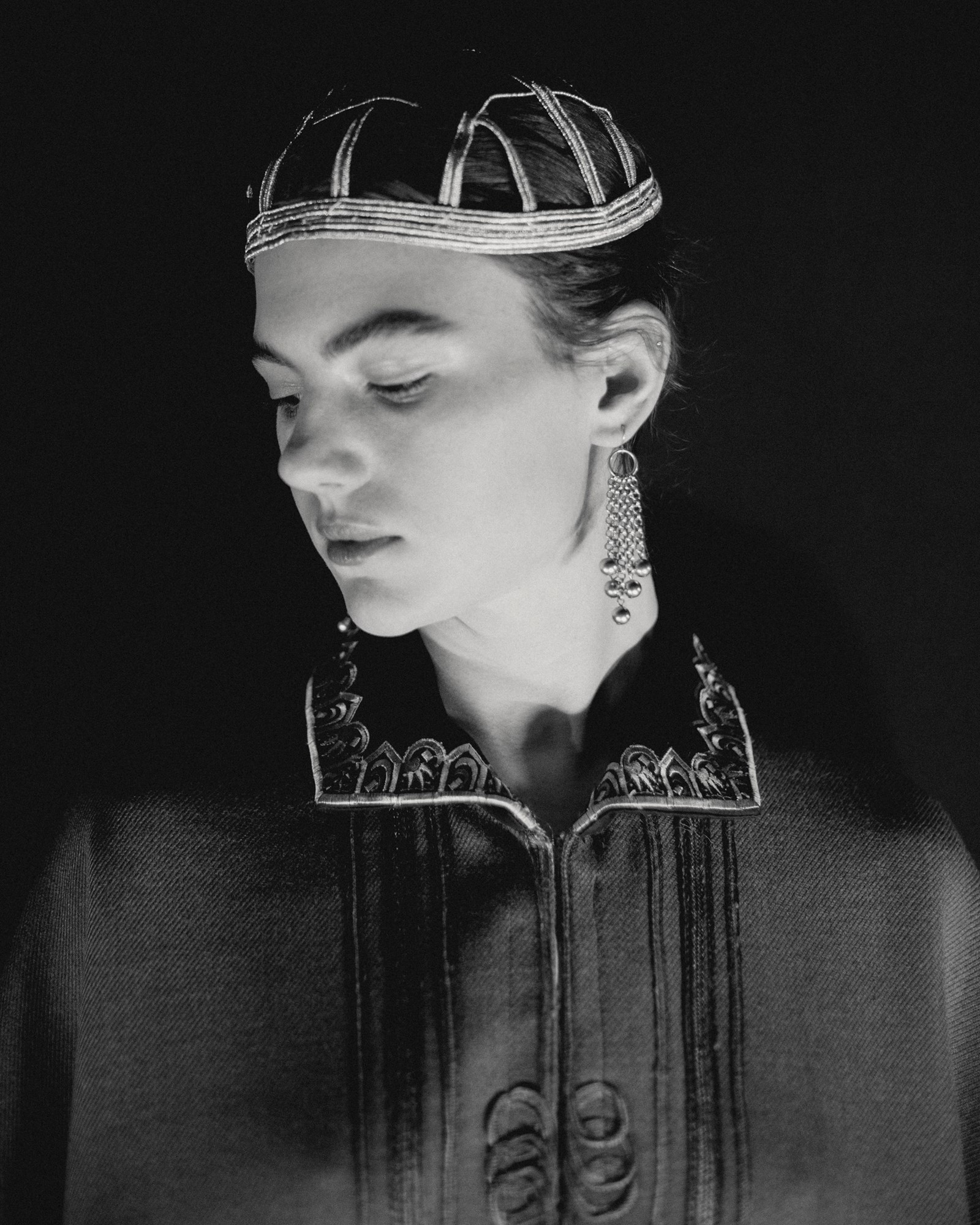
Karla Welch, Stylist
“I came across Bode years ago – my then-assistant Siena told me about her friend Emily who has remaking pieces from all her fabrics. I think we actually bought a shirt from one of her school projects, so we were super early fans! Bode is magic. From the clothes to the stores, you really feel like you are entering into a special universe of belonging.
“I have sweaters, button-ups and some cute shorts from Bode. I’ve mainly bought lots for clients and have commissioned suits as well! I feel connected to Emily’s world when I wear the brand. I’ve always been obsessed with the Arts and Crafts movement, and I truly feel that Emily is such an important figure in the lineage of artists of the movement today. Bode is doing its own thing, not for the sake of scale or growth.
“My favourite thing about Bode is the process. I was so fortunate to witness and work with Emily on Lorde’s 2021 Met Ball look (which was the best of the night). I say ‘work with’ loosely, as it was more just me absorbing and flowing alongside her process. It was as magical and special as you might imagine.”
“I feel that Emily is encouraging us to think about ourselves as custodians of our clothing; that we should keep our clothing for a long time” – Rachel Seville Tashjian Wise
Jermaine Gallacher, Interior Designer
“I first came across Bode through Green River Project – Aaron is a friend of mine. We met through appreciation online of each other’s work, and then we met properly in Paris when Emily did her first menswear show there in Paris in 2019. I loved the painted backdrops; I remember thinking it was very beautiful. We’d all got really drunk the night before and had a lot of fun.
“What I really like about Bode is the design element and the whole story behind each piece and the way they collaborate. It feels like a very strong family business, which I like. I love furniture, design and anything interiors, and Emily is constantly referencing that and there’s a crossover with Aaron’s work. They’ve managed to turn that homespun, idiosyncratic, vintage sensibility into a brand, without being really brand-y about it. With them, it’s about the ethos and the whole package; it’s not just the product. It has a community feel as well, with them having the tailors, a coffee shop and a bar. I feel quite a connection there with how I like to do things, it feels quite social.
“I have two Bode pieces and some really beautiful Green River Project chairs. I feel like myself when I wear the brand. I don’t normally wear many designer things, but I feel like it’s a pre-loved shirt. It doesn’t feel like I’m putting on designer gear – and I mean that as a massive compliment. Bode also feels very American in lots of ways because of the heritage and the vintage aspect. It feels less showy, less designer-y; it’s embedded in stories. It’s so different from all those glitzy, rather tidy American brands.”

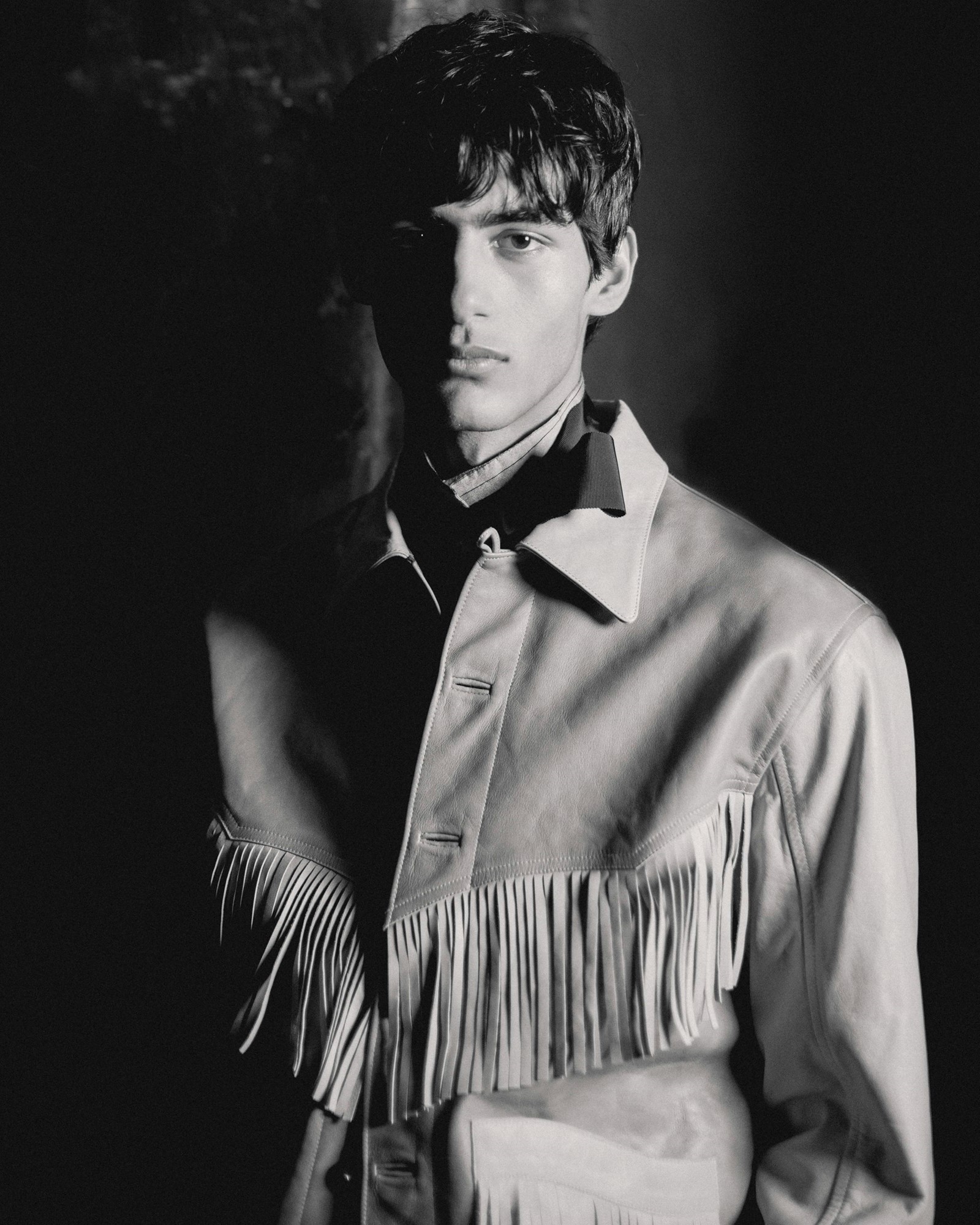
Rachel Seville Tashjian Wise, Fashion News Director at Harper’s Bazaar US
“I first came across Bode when Emily first launched the brand, after reading a small piece in T Magazine about her debut collection. She was making workwear jackets from antique quilts, and I just thought, what a captivating idea. The cut of that original jacket, which she still makes to this day, is so simple and regal. She has an understanding of the shape or the scale that a piece needs to be at to make you feel something really deep and tender about the clothing. Also, the clothes are so tactile. They invite you not just to touch them, but to cuddle up underneath them.
“The way that Emily has blended her own personal history and story into the brand is really appealing to people. She obviously has this very romantic and beautiful relationship with her husband [Aaron], and his background – his family coming from India – has also heavily influenced the clothes. It’s a completely new approach to making clothes that feel global. It’s unusual and it’s special, and also, it’s just so freaking beautiful! And the store is so inviting. The people who work there are so kind, and they let you try on things and really let you play – that’s really unusual too.
“I feel that Emily is encouraging us to think about ourselves as custodians of our clothing; that we should keep our clothing for a long time. If something is damaged, you can bring it into the store and they fix them. She encourages her customers to think: I have these beautiful objects that are future heirlooms that I wear, and they bring me this wonderful feeling, and I’m taking them through my life and embedding them with memories in the same way that the original textile is embedded with memories. That’s very different to how a lot of us have come to think about contemporary fashion, which is much quicker, [and is about] trying on different identities, always looking for something new, always trying to figure out what is trendy.
“It’s funny to use this word about Bode, but it’s the most hyped brand in New York right now. In the American fashion community, we’re quite proud of it and excited about it. It’s also the brand that people outside of fashion seem to be most excited about and responsive to. For men who work in finance, this is the cool brand for them to wear. In contrast to the former finance status symbols, like the Patagonia fleece or the Armani suit, the Bode jacket feels like something that is more gentle and considered. It represents an interesting change in masculinity and desire that’s taking place, specifically in New York and in the United States. It [the jacket] has the feeling of an Hermès flex. You go into this considered and highly considered physical space – a room of exquisite objects – and I think that’s appealing to someone who is trying to figure out how to spend their large income, at a time when having a large income is a very undesirable thing.”
“It’s not a hype brand, it’s not a streetwear brand, it’s not a brand of the moment, it’s just a brand that represents quality” – Eric McNeal
Eric McNeal, Stylist
“I first came across Bode via my friend who went to college with Emily. One day I met her on the street in Soho, and I asked her if I could come by her studio – this was before she even had a lookbook. I went to her studio in Chinatown and I remember being blown away by her quilts and textiles.
“Bode came at a time when there wasn’t a lot of variety in menswear; she creates silhouettes that every man can wear. I love it not only because it’s thoughtful from a brand identity space, but it’s also tasteful and the clothes really make you feel at home. I always feel confident when I wear them, and the jacket is like a talking piece. I have a cardigan with a dog on it and people always walk up to me and ask, ‘Oh my gosh, is that your dog?’ Bode has that fun, joyous thing that we love about fashion.
“Bode offers something that is unique. It’s not a new idea in terms of the quilts, the vintage, but it’s the way that Emily uses it in a modern way – specifically for men – that is actually fun. It’s a universe that you want to be a part of. I look at it as being on its way to becoming like a Ralph Lauren. Brand identities are so important now, and Emily does that so well – you want to be a part of it. As a man, there are not a lot of brands that make you feel as confident as her clothes do. It’s not a hype brand, it’s not a streetwear brand, it’s not a brand of the moment, it’s just a brand that represents quality. You don’t want to buy something for $2,000 that’s not going to last you for ten years. Even if you buy something, next door to the store in New York, there’s a tailoring shop that can repair it for you. A lot of brands don’t have that. That’s really what sets it apart; the brand thinks about the quality and longevity of the garment.”
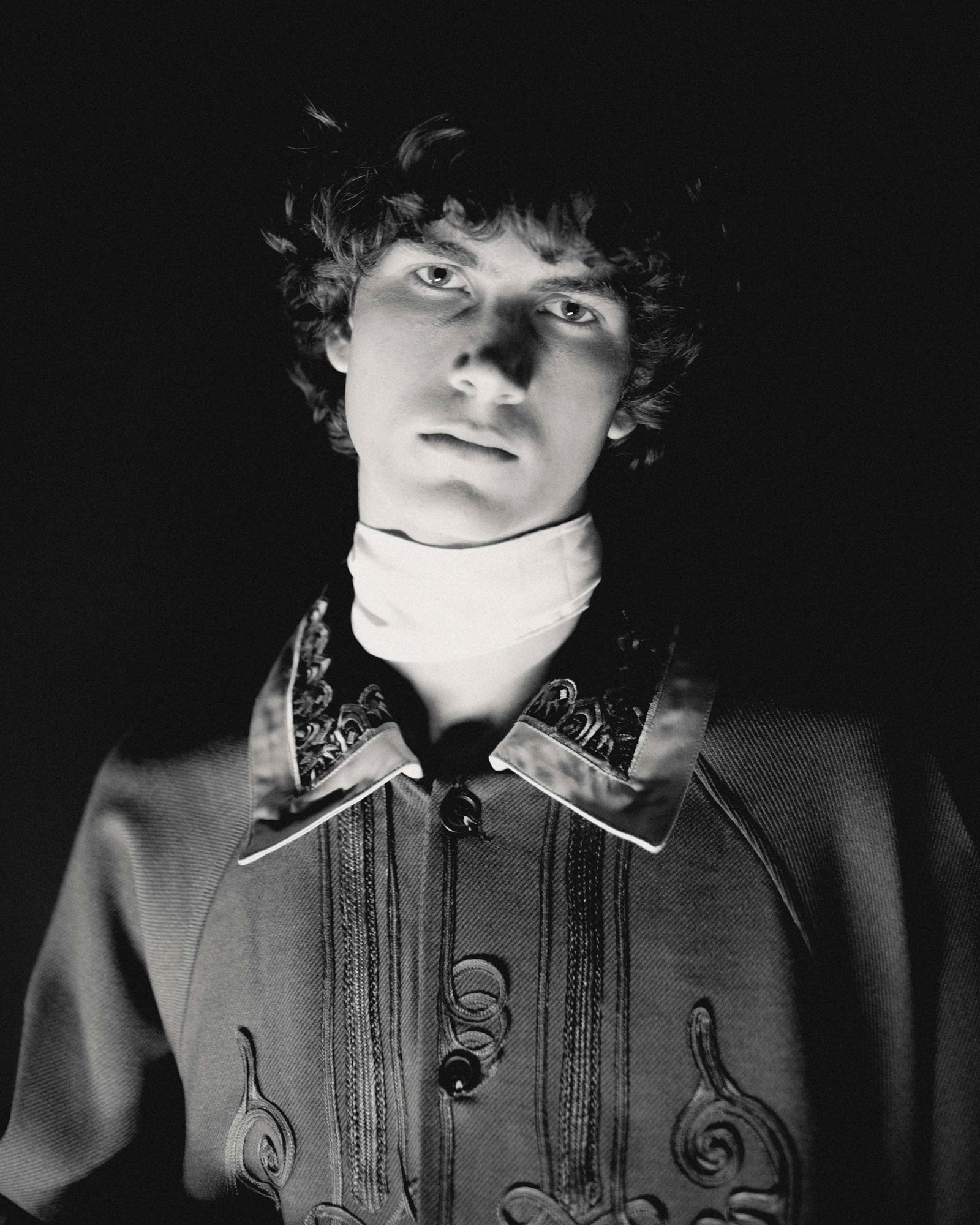
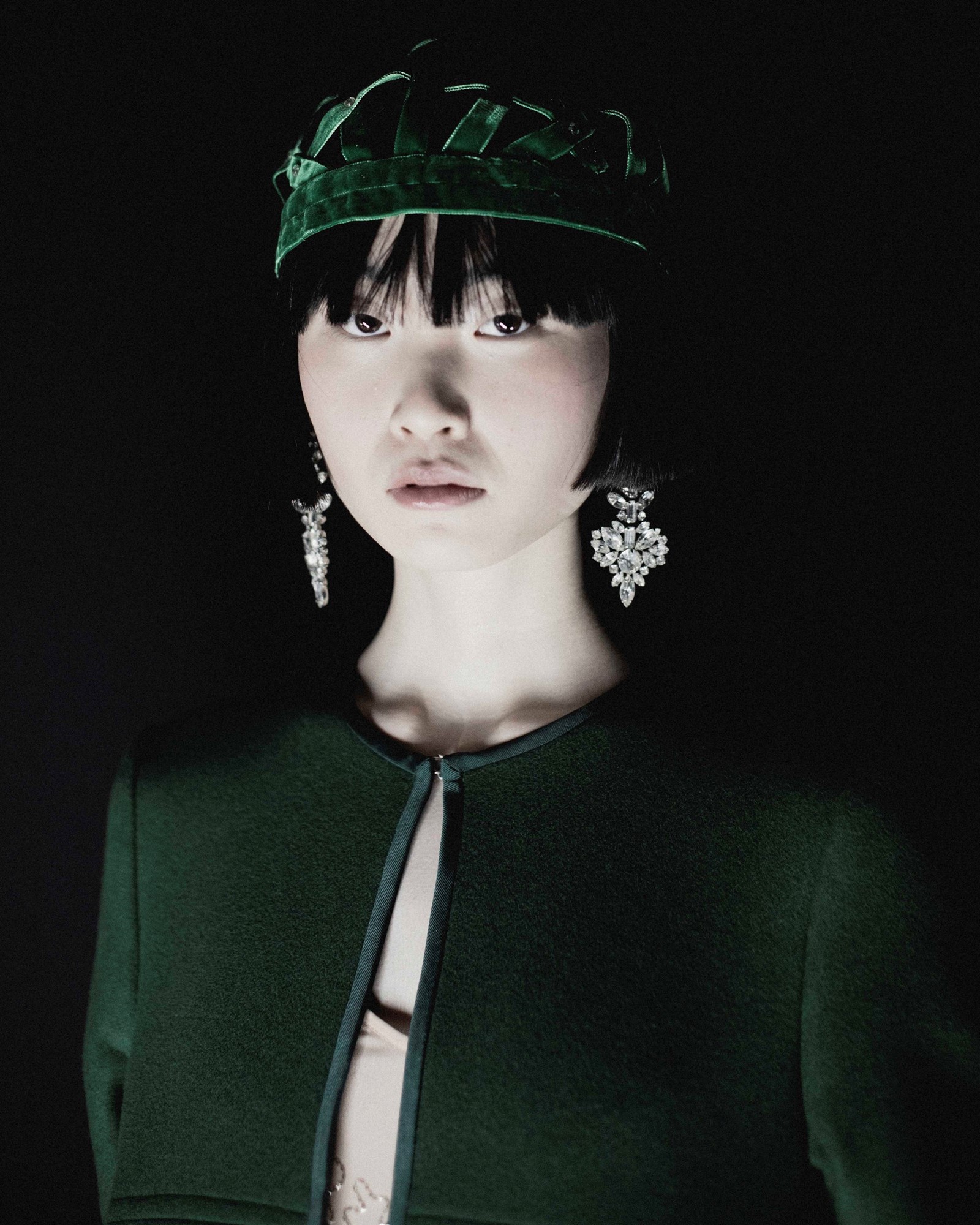
Samuel Hine, Fashion Writer at GQ
“I met Emily in 2016, when she was running the brand out of her tiny seventh-floor walk up apartment on the Lower East Side. I remember thinking that her project was so interesting, how she was taking quilts and other traditional American textiles that – at the time – felt pretty dusty and forgotten and turning them into really thoughtful garments. I was equally struck by how beautiful everything in her apartment was. There were really crazy antique quilts bursting out of every nook and cranny, and old family photographs alongside art and trinkets she’s collected for her whole life. I think the (now much larger) Bode universe – whether it’s the stores or the bar Emily and her husband Aaron now co-own in Chinatown – still inspires a sense of interest and nostalgia when you enter it.
“The first Bode piece I bought was right out of Emily’s apartment, an overshirt made out of a blue and green quilt from the 1920s. I probably introduced a hundred people to Bode from wearing that shirt around, because so many people stopped me to ask where I got it – people recognised that there was something unique and new about it, even though as an object it was quite old and classic.
“Emily and Aaron have a kind of ‘why not?’ attitude that’s refreshing in New York, and shows what’s possible for a small brand if there are ideas and ambition behind it. Their collaboration is also getting more intriguing the more the lines between Bode and Green River Project blur. They’re almost like the Rick Owens and Michèle Lamy of a different world. (I’m kidding, but also not.) It’s not easy to be the cool new brand on the scene, but Emily has stayed focused and taken creative risks to keep the brand going in unexpected new directions. There are some Bode imitators out there these days, but nothing feels even remotely close to the real thing.”
